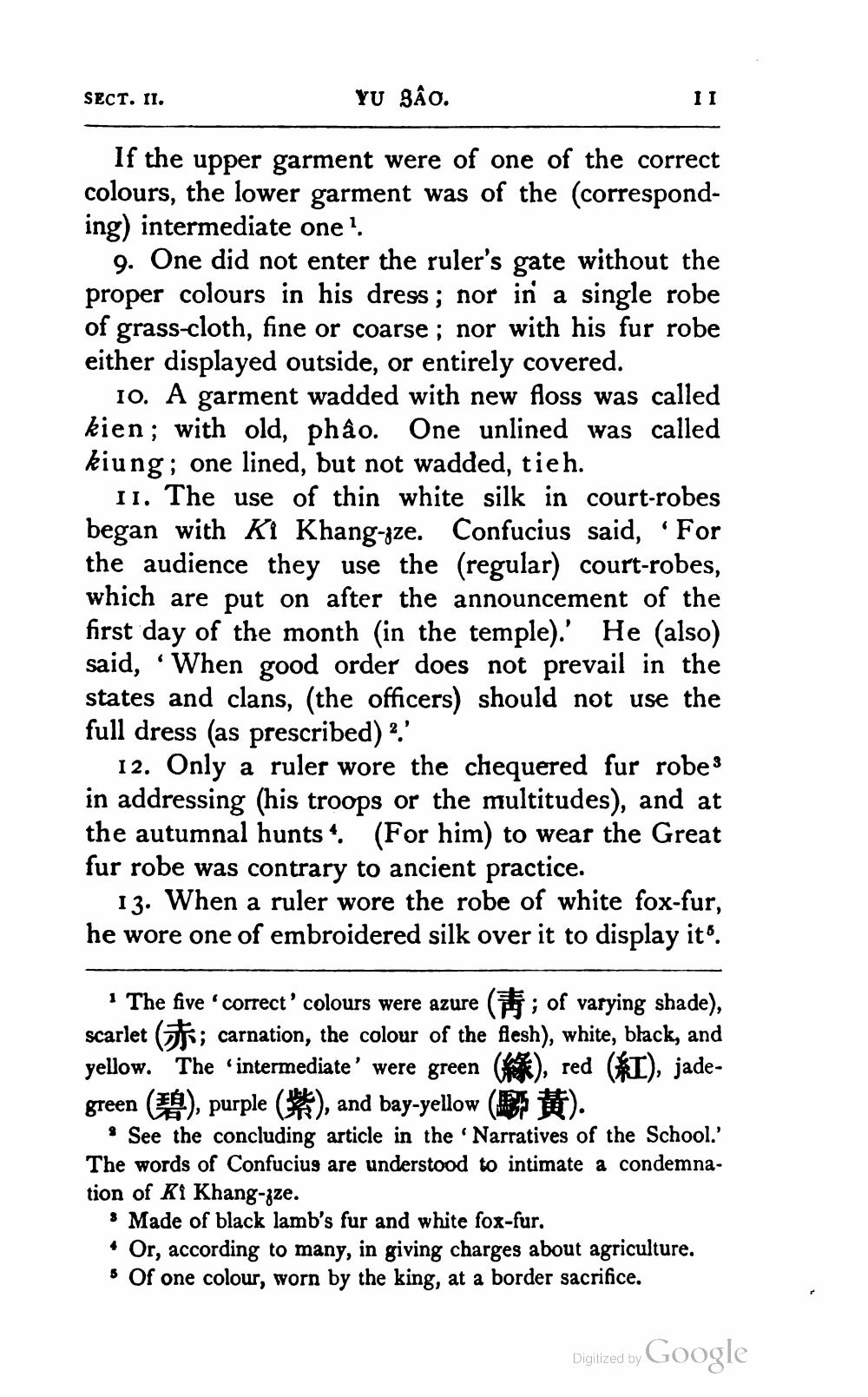________________
YU SÂO.
If the upper garment were of one of the correct colours, the lower garment was of the (corresponding) intermediate one 1.
SECT. II.
II
9. One did not enter the ruler's gate without the proper colours in his dress; nor in a single robe of grass-cloth, fine or coarse; nor with his fur robe either displayed outside, or entirely covered.
10. A garment wadded with new floss was called kien; with old, phâo. One unlined was called kiung; one lined, but not wadded, tieh.
II. The use of thin white silk in court-robes began with Ki Khang-ze. Confucius said, 'For the audience they use the (regular) court-robes, which are put on after the announcement of the first day of the month (in the temple).' He (also) said, 'When good order does not prevail in the states and clans, (the officers) should not use the full dress (as prescribed) 2.'
12. Only a ruler wore the chequered fur robe3 in addressing (his troops or the multitudes), and at the autumnal hunts. (For him) to wear the Great fur robe was contrary to ancient practice.
13. When a ruler wore the robe of white fox-fur, he wore one of embroidered silk over it to display it".
1 The five 'correct' colours were azure (; of varying shade), scarlet ; carnation, the colour of the flesh), white, black, and yellow. The 'intermediate' were green (*), red (I), jadegreen (), purple (*), and bay-yellow (†).
See the concluding article in the 'Narratives of the School.' The words of Confucius are understood to intimate a condemnation of Ki Khang-zze.
Made of black lamb's fur and white fox-fur.
• Or, according to many, in giving charges about agriculture. 5 Of one colour, worn by the king, at a border sacrifice.
Digitized by
Google




